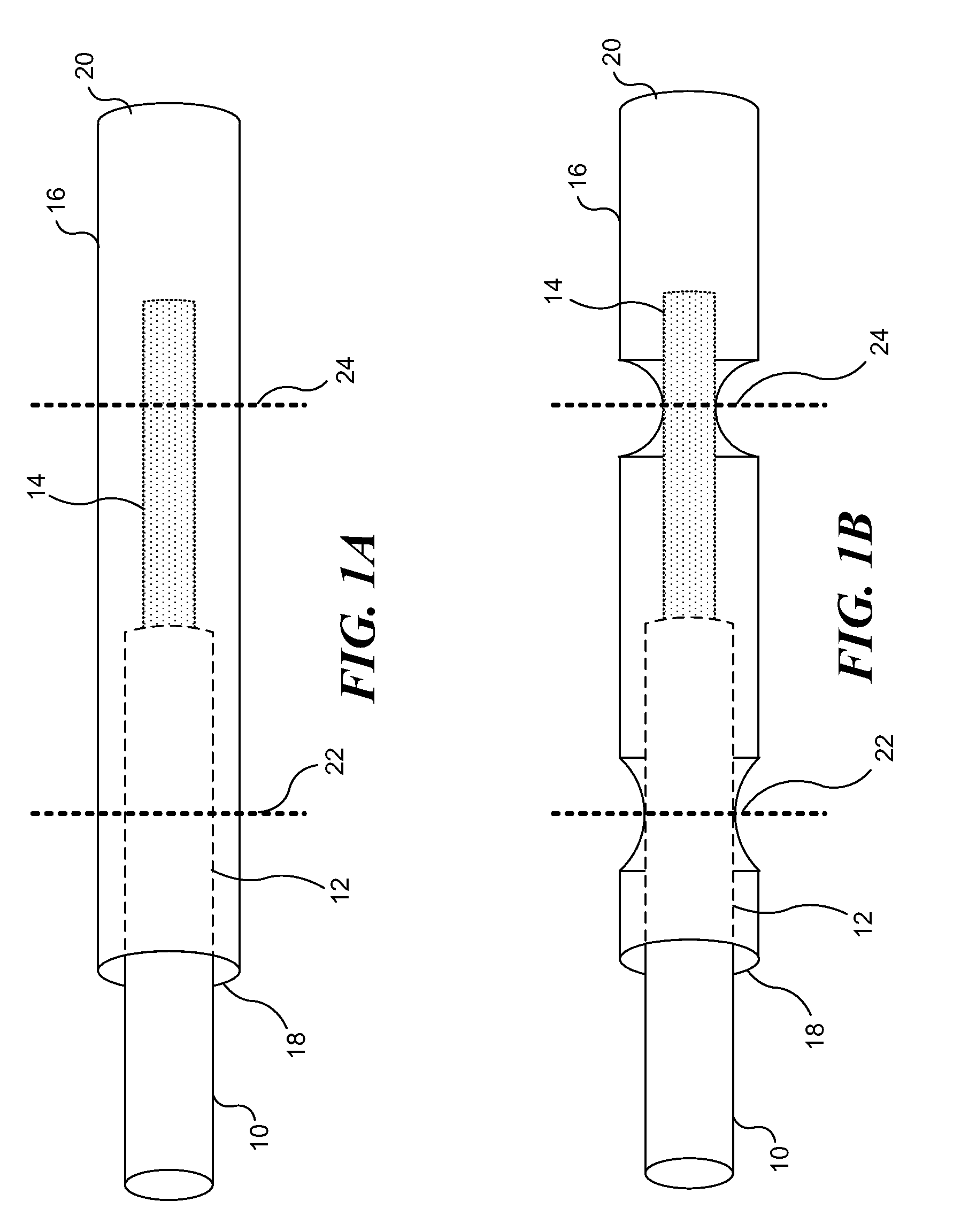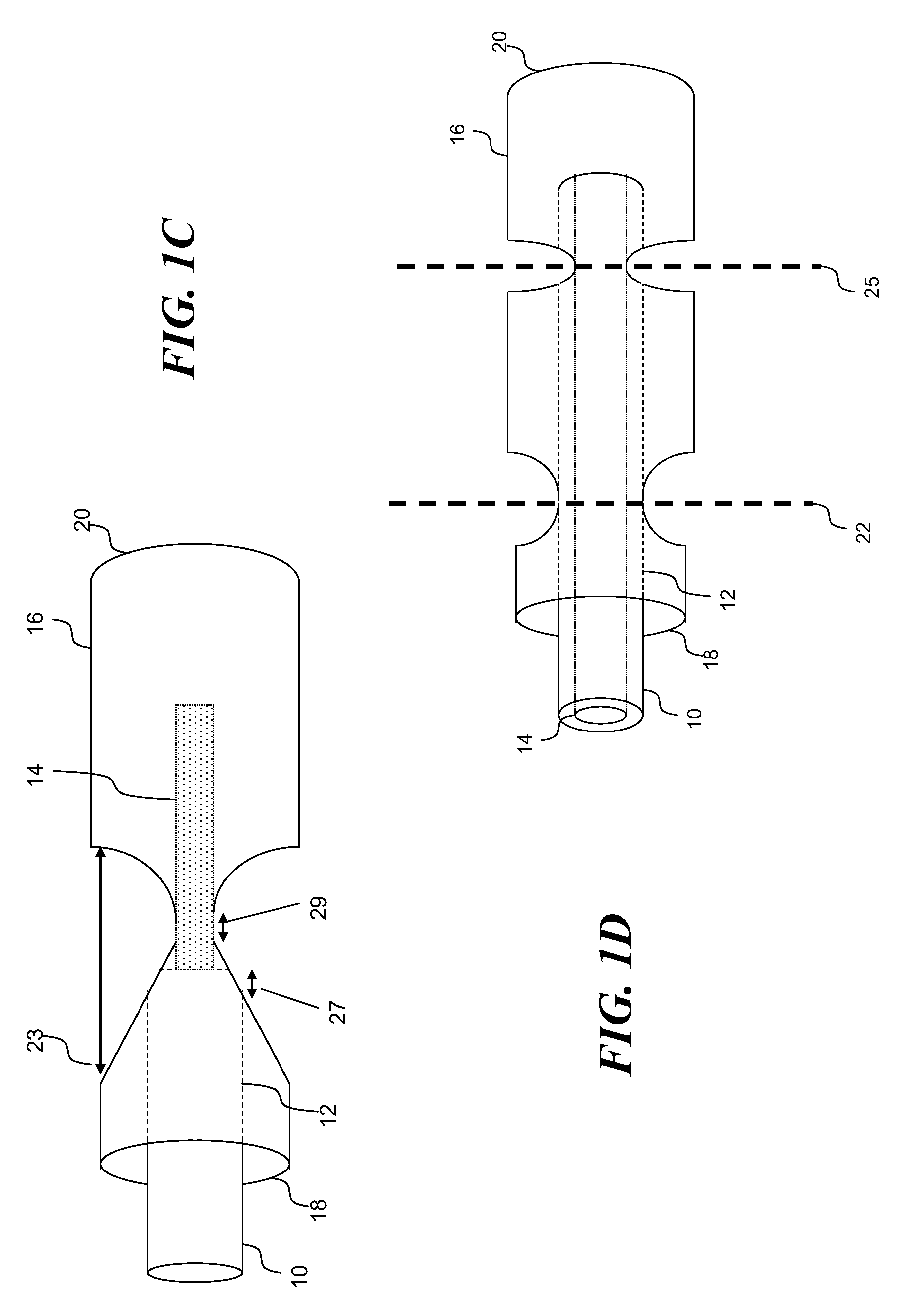Medical Lead Termination Sleeve for Implantable Medical Devices
a technology of medical devices and lead termination sleeves, which is applied in the field of medical lead termination sleeves for implantable medical devices, can solve the problems of poor quality welds, manufacturing challenges, and sustained galvanic corrosion, and achieve the effect of robust electrical connections
- Summary
- Abstract
- Description
- Claims
- Application Information
AI Technical Summary
Benefits of technology
Problems solved by technology
Method used
Image
Examples
first exemplary embodiment
of Termination Sleeve
[0036]FIG. 1A illustrates a lead wire inserted into an exemplary termination sleeve for use with implantable medical devices, wherein the termination sleeve includes an open proximal end and a closed distal end, relative to the medical lead wire. FIG. 1B illustrates the medical lead wire and termination sleeve combination of FIG. 1A, after the termination sleeve has been modified to engage the medical lead wire at a first location and a second location, the termination sleeve sealingly engaging an insulating protective cover of the medical lead wire at the first location, and conductively engaging the medical lead wire at the second location, fastening the medical lead wire within the termination sleeve and making an electrical connection between the two components. The termination sleeve can next be electrically and physically coupled to an electrode, as shown in FIG. 2. Significantly, the relatively larger termination sleeve is easier to manipulate than the re...
PUM
| Property | Measurement | Unit |
|---|---|---|
| diameter | aaaaa | aaaaa |
| diameter | aaaaa | aaaaa |
| diameter | aaaaa | aaaaa |
Abstract
Description
Claims
Application Information
 Login to View More
Login to View More - R&D
- Intellectual Property
- Life Sciences
- Materials
- Tech Scout
- Unparalleled Data Quality
- Higher Quality Content
- 60% Fewer Hallucinations
Browse by: Latest US Patents, China's latest patents, Technical Efficacy Thesaurus, Application Domain, Technology Topic, Popular Technical Reports.
© 2025 PatSnap. All rights reserved.Legal|Privacy policy|Modern Slavery Act Transparency Statement|Sitemap|About US| Contact US: help@patsnap.com



